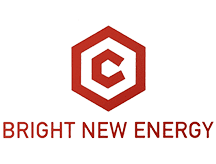In the early 1900s, energy professionals began to develop the power grid. They have obtained abundant and reliable electricity supply by burning fossil fuels such as coal and oil. Thomas Edison objected to these energy sources, saying that society derives energy from natural supplies, such as sunlight and wind.
Today, fossil fuels are the world’s largest energy source. As more and more consumers are aware of the adverse ecological impact, people are beginning to adopt renewable energy. The global transition to clean power has affected the technological advancement of the industry and promoted new power supplies, equipment and systems.
Photovoltaic and other solar developments
As the demand for renewable energy increases, power professionals develop new technologies and expand the supply. Solar energy is a major global product in the field of clean energy. Environmental engineers created photovoltaic (PV) panels to improve the efficiency of clean energy.
This technology uses photovoltaic cells to loosen the electrons in the panel, thereby generating energy current. The transmission line collects the power line and converts it into electrical energy. Photovoltaic devices are very thin, which helps individuals install them on roofs and other convenient locations.
A team of environmental engineers and scientists adopted photovoltaic technology and improved it, creating a version compatible with the ocean. Singapore’s energy professionals have used floating photovoltaic panels to develop the largest floating solar farm. The high demand for clean energy and limited production space have affected this technological advancement and revolutionized the renewable energy sector.
Another technological advancement affected by renewable energy is solar charging stations for electric vehicles (EV). These power stations include a photovoltaic canopy that can generate clean electricity on site and feed it directly into the car. Professionals plan to install these devices in grocery stores and shopping malls to increase electric vehicle drivers’ access to renewable energy.
Compatible and efficient system
The renewable energy sector is also influencing the progress of smart technology. Smart devices and systems save energy and reduce the pressure on clean power grids. When individuals pair these technologies, they can reduce greenhouse gas emissions and save money.
A new smart device that takes over the residential sector is an autonomous thermostat. Eco-conscious homeowners are installing the technology to improve the stability and longevity of rooftop solar panels and other on-site clean energy technologies. Smart thermostats use the Internet of Things (IoT) to increase access to Wi-Fi for advanced functions.
These devices can read the local weather forecast and adjust the indoor temperature to reduce energy loss on comfortable days. They also use motion detection sensors to divide the building into multiple areas. When an area is vacant, the system will turn off the power to save power.
Cloud-based smart technology also supports improved energy efficiency. Residents and business owners can use the system to improve data security and improve the convenience of information storage. Cloud technology also improves the affordability of data protection, helping individuals save money and energy.
Renewable energy storage
Hydrogen fuel cell storage is another technological advancement affected by the renewable energy sector. One of the limitations of clean power systems such as solar panels and wind turbines is that they have the lowest storage capacity. Both devices can effectively provide renewable power on sunny and windy days, but it is difficult to meet consumers’ power needs when weather patterns change.
Hydrogen fuel cell technology has improved the storage efficiency of renewable energy and created ample power supply. This technology connects solar panels and wind turbines to large-scale battery equipment. Once the renewable system charges the battery, the electricity passes through the electrolyzer, dividing the output into hydrogen and oxygen.
The storage system contains hydrogen, creating a rich potential energy supply. When the demand for electricity increases, hydrogen passes through the converter to provide usable electricity for homes, electric cars and other electronic devices.
Sustainable technology on the horizon
As the field of renewable energy continues to expand, more supporting and compatible
technologies will enter the market. A team of engineers is developing a self-driving electric car with a photovoltaic-lined roof. The car runs on the solar energy it generates.
Other developers are creating clean microgrids that use only renewable energy. Countries and smaller territories can use this technology to achieve emission reduction targets and improve atmospheric protection. Countries that adopt clean energy technologies can reduce their carbon footprint and increase the affordability of electricity.
Post time: Dec-23-2021
